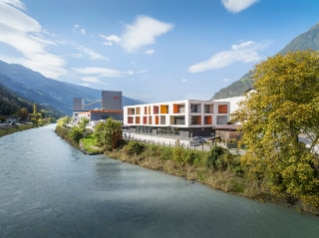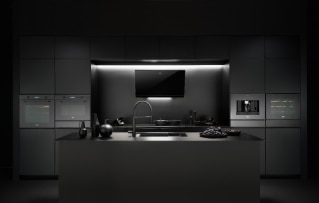“A kitchen must meet the needs of those who work in it.” In short, you need a custom-made kitchen, specifically designed for its chef: Michelin-starred chef Andrea Berton has very clear ideas, and this year became testimonial for Siemens. The restaurant that bears his name, the culinary Mecca of the glamorous and innovative Milanese district Isola-Garibaldi, opened its doors in 2013. A restaurant that was created also starting from what he calls his “personal predisposition” for the design and development of kitchens.
How does your restaurant’s kitchen look, Mr. Berton?
I designed it and made it functional, following my idea of cooking, my dishes, my philosophy.
So, you’re telling me that the kitchen is a reflection of the chef.
Yes, it is. And it’s very important to have clear ideas in order to design the space in which you will work.
What about the organization?
The organization of the kitchen is determined by the study of the spaces, of the comfort and of the distance between the people who work in it.
How many of you work in the kitchen?
Normally there are 16 of us.
Is the kitchen of your restaurant big?
Yes, it’s big.
Can you tell me how you organized it?
I thought of a kitchen with a central block that serves as the engine of everything, where the various cooking is done, and then each department has an induction plate recessed in the workbench, which allows you to work and cook without having to go to the central block.
What are the 5 departments?
Appetizers, fish, meat, pasta, pastry.
You were saying that space optimisation is a guiding principle for you.
For example, the whole refrigerator section is remotely controlled with a water-cooling system, there isn’t a space specifically dedicated to the refrigerator motor an nothing else, as in other kitchens. I decided to make use of that space. I optimised every centimeter, even the hot plate counters and the dryer.
Dryer?
It’s a counter where the products that need to be dehydrated are put to dry. I had this one made especially for me. It is shaped like a fridge, but it has fans inside that raise the temperature from 30 up to 80 degrees.
What kind of food does it make?
For example, rice chips, the crunchy rice that we offer the customers when they first sit at the table. They are cooked for several hours at 50 degrees. And I don’t have to use the ovens to do that.
Maybe another chef wouldn’t mind.
Every chef has different needs. That’s why it’s important that the restaurant’s kitchen is designed by a chef. Architects, no matter how good they are, don’t know how a kitchen really works...
Is the kitchen an elastic concept?
Is it designed to change over time? The kitchen is made to be definitive. You can add different appliances, but the structure is permanent.
How long does it last?
At least 15 years, if it’s done properly.
Any other customizations you’ve introduced?
I raised the workbenches. Usually, people have to bend down to work, and that’s not good. This shows a lack of attention in the designing process. For our job, we have to stand for long hours. If we stand up straight, it’s easier. My workbenches are 90, 95 centimeters high. And then, for the counter where I make bread, I decided to use satin glass, which allows me to work better.
What material do people normally use?
The bread counters are usually made of marble.
And then, in Berton Restaurant’s kitchen there’s the famous coffee table for the clients...
Yes, it’s a table for two people, in the area of food plating and presentation, which makes the customers really live the kitchen.
Does the customer interact with the kitchen?
Maybe not, but they live its essence.
You are brand ambassador for Siemens home appliances, which are designed for homes, not restaurants. Would you like to have a specific Siemens technology in your restaurant?
Yes, their induction hob with integrated ventilation system. It would have been nice to have it in the kitchen (refers to the inductionAir Plus hob, Editor’s note).
Other things from the home kitchen that you brought to work?
Well, the soft close drawers. Or the light in the fridge: the professional ones, which are low and horizontal, usually don’t have it.
So, the professional kitchen copies the home kitchen.
It’s more the opposite, really.
At this point the question is obvious: how does the kitchen in your house look?
The kitchen at my place is functional, with a central induction hob, the space is optimized. It is a habitable room. I designed it years ago on the occasion of a collaboration project with Arrital. It is made with an innovative material called krion. I have ovens with which you can work very well, even when low temperature cooking. Obviously they are Siemens, like all my household appliances.
If you could design an appliance that still doesn’t exist?
Since I have this all-stock menu, I would like to have a pot capable of regulating cooking and boiling times and flavours, which strains the stock without having to clarify it later. A pot capable of concentrating the essence of the flavor and producing a clarified product from the very beginning.
A tailor-made appliance for Berton’s kitchen.
We are working on it, we are trying to work out how it could be done.







